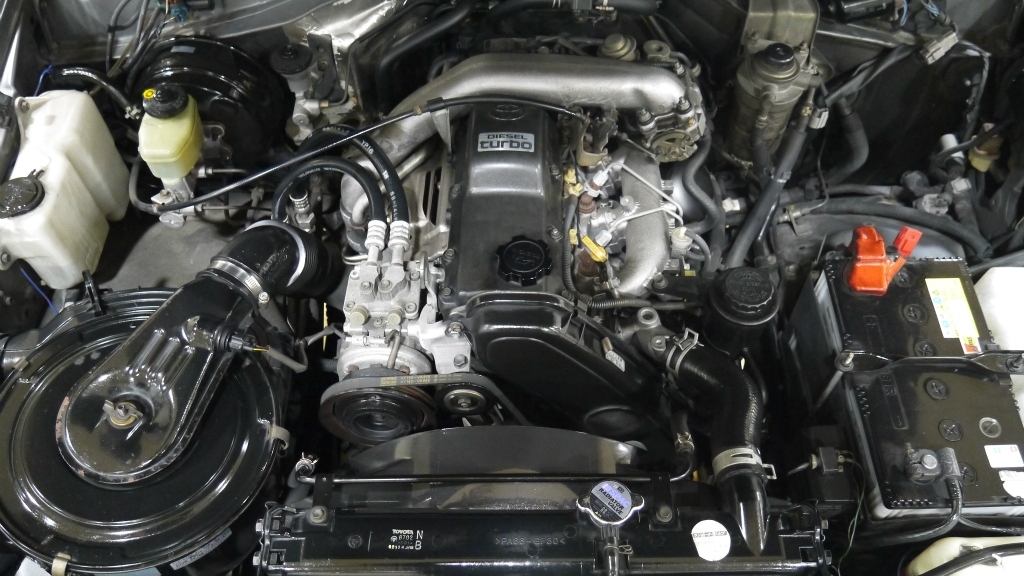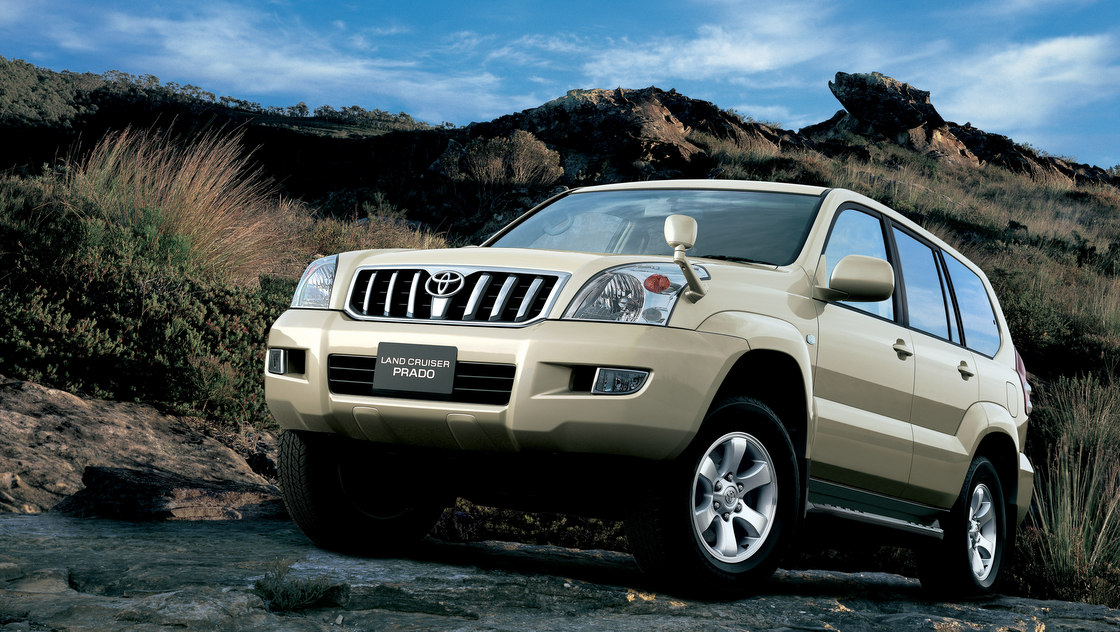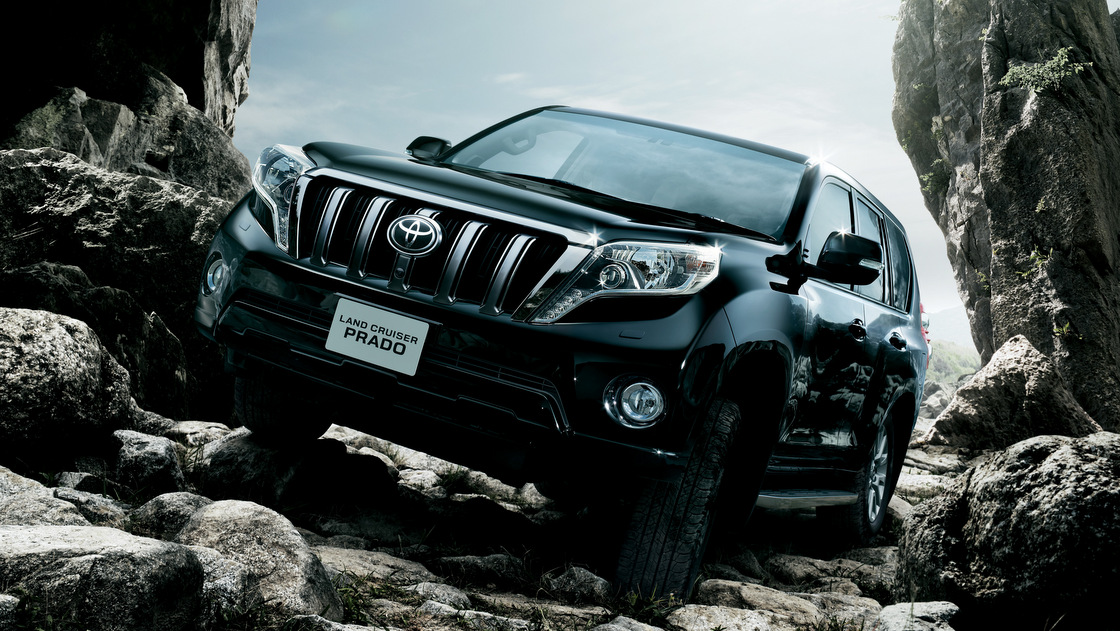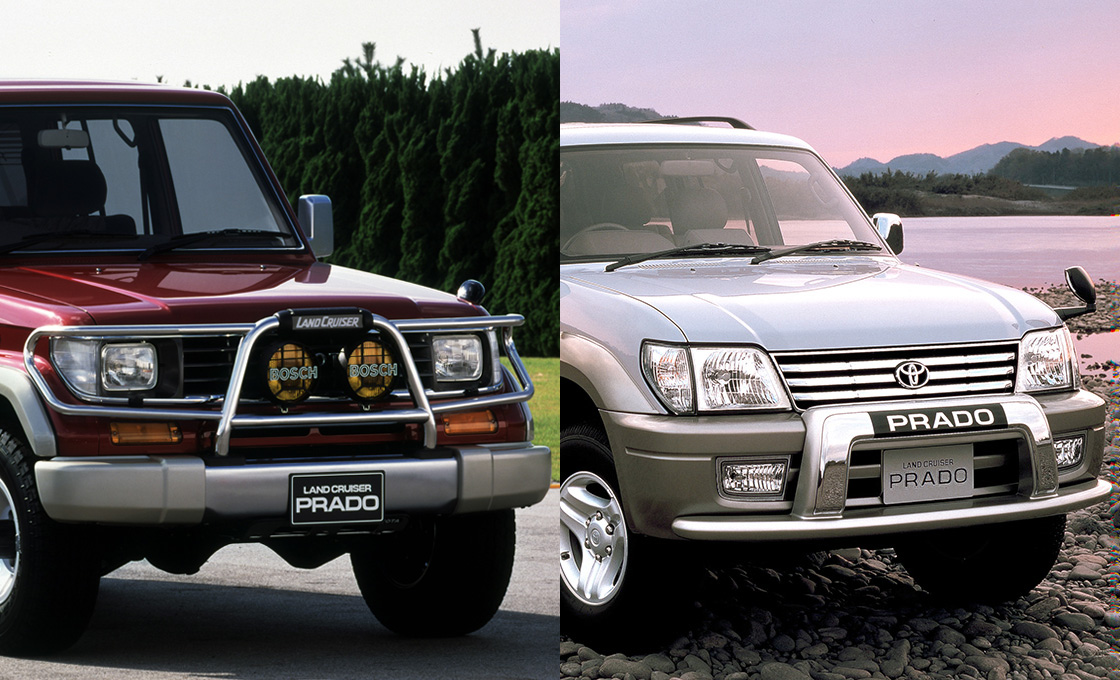Land Cruiser Prado diesel models are being sought after again
Land Cruiser Prado (known in the United States as the Land Cruiser) used cars are seeing a quiet revival of their popularity. It seems that more and more fans are realizing the appeal of the Land Cruiser Prado because it has so many great features. It is known for its durability, which makes it a tough vehicle that can withstand a lot of miles. It also has a moderate retro feel; its price is reasonable, and there is a good market of customized components.
In this market environment, the Land Cruiser Prado diesel is starting to get attention. In the 1990s, when the Land Cruiser Prado started getting second looks, people equated the Land Cruiser with a diesel engine. The Land Cruiser 70 Prado was the one with just a diesel engine, but the Land Cruiser 90 Prado was offered with your choice of two gas-powered engines along with the diesel option. Furthermore, in the 120 Prado, the gas-powered model was the leading 120 model as the use of diesel-powered engines was phased out.
As emissions regulations became stricter, Toyota invested a lot of money to develop gas-powered vehicles, which is reflected in the vehicle prices. Toyota had to phase out the diesel engine vehicle. However, the current Land Cruiser 150 series Prado has been equipped with the latest clean diesel engine that was developed in 2015. This new engine offers high performance and is eco-minded enough to cause people to start looking for the old Land Cruiser diesel-powered vehicles.
If you choose the Land Cruiser Prado for economy and torque, diesel is recommended

Diesel’s tough performance can be as good as gas power
In the 1990s, sales of diesel-powered Land Cruisers skyrocketed. In addition to the Land Cruiser 70 Prado, which was only offered with a diesel engine, the Land Cruiser 80 equipped with a diesel engine was also popular. The appeal of diesel engines is that they have a high fuel efficiency rate. Diesel fuel was cheaper than gasoline in the 1990s, and if the fuel efficiency was good, everyone wanted a diesel engine car.
Moreover, the appeal of diesel engines is not only about economics. The punching power at high-speed rotation is not as good as that of a gasoline engine, but by generating a large amount of torque from an extremely low rotation speed, the results are satisfying. The Land Cruiser’s diesel engine performance is not inferior to that of a gasoline engine of the same displacement.

The diesel engine that goes well with the Land Cruiser Prado
The high degree of practicality due to the large torque of the diesel engine is very convenient not only for Prado but for all Land Cruisers. Even the Prado, which is said to be the lightest of the Land Cruisers, has a vehicle weight of nearly 2 tons. Diesel engines are ideal for heavy -weight vehicles.
Generally speaking, to run a heavy car with a gasoline engine, the displacement must be increased to gain torque at low speeds. Gasoline engines with a large displacement have large moving parts that are heavy, so they can’t rotate at high speeds. Although they could solve the problem by increasing the number of cylinders and reducing the weight of the moving parts, the development and production costs of this type of an engine chan raises the vehicle price.
Moreover, the larger the engine displacement, the greater the fuel consumption, so an engine that uses gasoline, which is more expensive than light oil, is very uneconomical. Big trucks and buses will inevitably run on diesel engines instead of gasoline engines. Although the size and weight of the Land Cruiser Prado is not as massive as a large truck, it is certainly compatible with a diesel engine like those used to move heavy loads.

Two types of Land Cruiser 70 Prado engines
There are two types of Land Cruiser 70 Prado diesel engines. From its debut in 1990 to the minor change in 1993, the 2L-TE type 2.4-liter in-line 4-cylinder diesel turbo engine was installed. After that, the 1KZ-TE type, which was expanded to 3 liters with the inline 4-cylinder diesel turbo, was installed until the end of production in 1996.
Both diesel engines are attractive for their diesel-like thick torque at low-speed rotation and wide practical rotation range due to turbo. However, the difference in ability due to the difference in displacement has become clear. The 3-liter 1KZ-TE type is superior to the 2.4-liter 2L-TE type in every way.
Naturally, the engine developed later will be superior in performance, and even though the rank of the automobile tax raised one step in Japan, the engine of this era compensates for the power performance that tends to decrease due to strict exhaust gas regulations with displacement.
The development theory has paid off beautifully. The Land Cruiser 70 Prado with a 2L-TE model is scarce in the used car market. Acceleration can be a bit sluggish in the 4-door, but the lighter 2-door short can be very responsive. The 3-liter 1KZ-TE type is a lively diesel engine. Many of the turbocharged engines of this era had low torque in the low-speed range until the turbo’s effectiveness was fully demonstrated, but the 1KZ-TE model was different. It generates a powerful torque that accelerates quickly from the start, and the rotation after that is as smooth as a gasoline engine. You might say that it was developed just for the Land Cruiser 70 Prado.

90 Prado Diesel boasts performance equal to or better than the gasoline version
The Land Cruiser 90 Prado was launched in 1996 as the successor to the Land Cruiser 70 Prado. In addition to the 3-liter in-line 4-cylinder diesel turbo inherited from the 70 Prado, a 2.7-liter in-line 4-cylinder and a 3.4-liter V6 gasoline engines were added. In response to the growing popularity of the Land Cruiser Prado, the lineup was expanded, but the 1KZ-TE diesel turbo was the top runner in both performance and popularity.
The Land Cruiser 90 Prado itself had evolved significantly from the Land Cruiser 70 Prado, but it wore the changes well. As you can see, it has become more stylish. The chassis was also revamped, the front suspension was changed to an independent suspension, and the 4WD system was changed to a full-time system. Ride comfort and stability at high speeds have been dramatically improved. The 1KZ-TE type diesel turbo engine is not inferior to the 2.7-liter inline 4 gasoline engine in terms of torque and smoothness of rotation.
In 2000, the model 1KZ-TE passed the baton to the model 1KD-FTV. The 1KD-FTV type was developed with priority given to improving exhaust emissions over improving displacement and output characteristics. In addition, times called for cleaner performance. The cylinder head has been greatly improved to DOHC, and the common rail fuel injection system has been combined to greatly reduce black smoke emissions. Compared to the 3.4-liter V6 gasoline engine, this newly developed diesel turbo engine is one step behind in smoothness up to high-speed rotation, but the richness of the torque exhibited over a wide rotation range still offers the attractive feel of a diesel turbo. Because Japan’s automobile tax rank is one step lower than V6 gasoline and the difference in fuel efficiency is large, the two types of diesel turbo engines continue to reign as the main players in the Land Cruiser 90 Prado lineup.

A 120 Prado diesel engine offers a good balance
In 2002, the Land Cruiser 90 Prado evolved into the Land Cruiser 120 Prado, and the diesel engine continued to use the 3-liter in-line 4-cylinder diesel turbo 1KD-FTV type that was installed in the latter half of the 90 Prado. The gasoline engine was initially equipped with a 2.7-liter straight 4 and a 3.4-liter V6 from the 90 Prado, and later the 2.7-liter straight 4 was replaced with a new engine without changing the displacement, and the 3.4-liter V6 greatly increased the displacement at the end of the model.
Toyota switched the Land Cruiser 120 Prado to a 4-liter V6. The 1KD-FTV 3-liter in-line 4-cylinder diesel turbo engine was still boasting high performance in total driving performance from off-road to high-speed driving, but it gradually was replaced as diesel engines lost their popularity. With its style and interior options, the Land Cruiser 120 Prado is designed more for those who like luxury. Because of the new adoption of a 4-liter V6 gasoline that surpasses the 1KD-FTV model in terms of both power performance and quietness, it has taken the leading role in the lineup. However, once the transfer is shifted to the low range off-road, the diesel turbo engine still has the edge in terms of handling.
The 4-liter V6 gasoline engine is energetic, but the response in the low-speed range is too sensitive, and it shows a bit of a sharp response in the low range where torque is amplified. In terms of specs, the V6 gasoline engine is superior, but the diesel turbo engine has good performance that cannot be expressed in numbers.
Unfortunately, the Land Cruiser 120 Prado equipped with the 1KD-FTV type was hit by a storm of exhaust gas regulations, such as the discontinuation of sales in some regions towards the end of the mode’s lifespan. However, as a Land Cruiser engine, the Land Cruiser Prado’s diesel engine was certainly the most well-balanced at that time.

The latest in a clean diesel engine is installed in the current 150 Prado
The 150 Prado, which appeared in 2009 as the successor to the Land Cruiser 120 Prado, has been revived with a diesel turbo engine that was introduced in 2015. It is the 1GD-FTV type that has cleared the latest exhaust gas regulations and has also achieved increased power. The displacement has been downsized to 2.8 liters and the fuel efficiency has also improved.
Looking back at the history, you can see that from the first Prado Land Cruiser 70 Prado to the current 150 Prado, a powerful diesel engine suitable for each era has been installed. Thanks to exhaust gas regulations, the Land cruiser Prado before the current model is limited to where it can be registered in Japan, but it can be said that the Land Cruiser Prado of any era is best suited for a diesel engine.
No matter which era Land Cruiser Prado you choose as a used car, you will not regret the performance of the diesel engine. However, as a user, what I would like you to keep in mind is proper maintenance will keep its performance at its best. Frequent oil changes are more important than in the gasoline engine, especially in older models. The black smoke in the exhaust gas from a diesel engine quickly contaminates the engine oil. In addition, the engine oil deteriorates surprisingly quickly because it is constantly exposed to high temperatures by the turbocharger. To deal with a diesel turbo engine, it is best to maintain it by following Land Cruiser’s recommendations.



